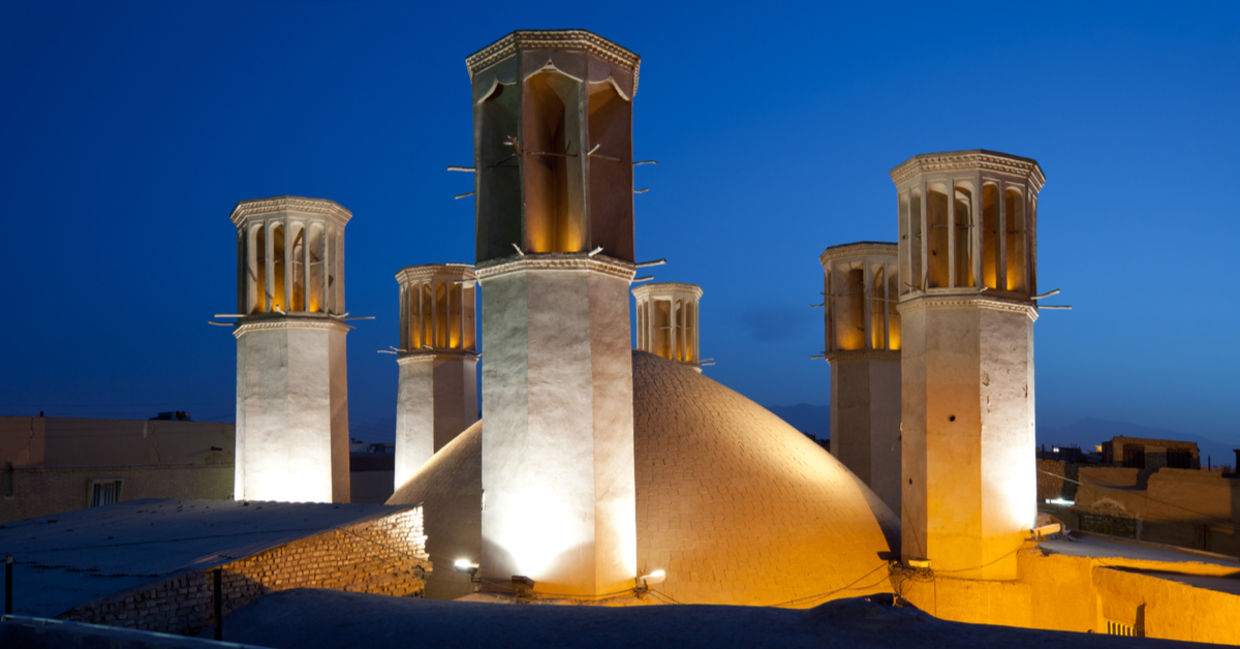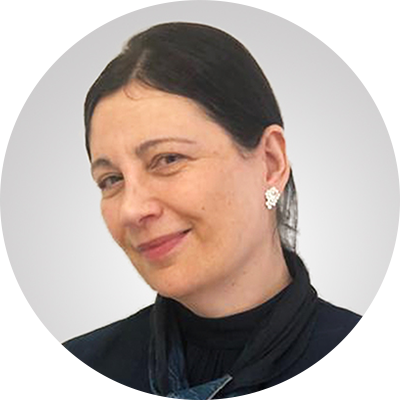
(Borna_Mirahmadian / Shutterstock.com)
Not to be confused with dream catchers which are handmade hoops with woven nets said to promote good dreams, wind catchers, ancient too, have a different allure. These are tall towers, thousands of years old, originating in hot and arid Middle Eastern desert areas that catch the breeze to cool stifling home interiors. And the good news is that adapted versions are already being incorporated into new buildings in other countries including the US.
Today, traditional wind catchers are most often seen in the Iranian desert city of Yazd. These wind catchers, or bâdgir in Persian, are visible all around the city, towering over the rooftops.
A BBC Future Planet article discusses how these historical, alternative cooling systems have caught the attention of engineers and architects keen to find a greener way of helping people cope with hotter climates. With conventional air conditioning consuming a fifth of electricity consumed globally, and using refrigerants that act as greenhouse gases when released into the atmosphere, scientists have been paying closer attention to these towers. Perhaps these can play a role in keeping us cool in our rapidly heating world.
This summer, let us be inspired by the traditional windcatcher. An architectural element used to create natural ventilation and passive cooling in buildings. Widely used in North Africa and in West Asia around the Persian Gulf for the past 3000 years.#withnature #architecture pic.twitter.com/RIrfQwHt1E
— TAKminds (@TAKminds) July 6, 2021
So how does this ancient cooling alternative work? As the BBC piece details, two main forces drive air through and down into the tower-like structures: the incoming wind and the change in the buoyancy of air depending on temperature, with warmer air tending to rise above cooler, denser air:
“First, as air is caught by the opening of a wind catcher, it is funneled down to the dwelling below, depositing any sand or debris at the foot of the tower. Then the air flows throughout the interior of the building… Eventually, [stale] warmed air will rise and leave the building through another tower or opening, aided by the pressure within the building.”
Often rectangular, wind catcher towers also come in other shapes including square, octagonal, and other more ornate forms. The shape of the tower and the direction it faces, as well as factors like the layout of the home and its height, are fine-tuned to boost the tower’s ability to ventilate the homes below it.
#windcatcher the ancient Persian way to keep cool https://t.co/71cmDyyfOX via @BBC_Future
— Pamela Jane Rogers (@pamporos) August 20, 2021
This ancient method of cooling homes in desert communities in countries like Egypt, Iran, Qatar, Bahrain, the UAE and Pakistan is examined by Fatemeh Jomehzadeh of the University of Technology Malaysia and colleagues from the Universities of Leeds, Sheffield and York in the UK in a published paper. It focuses on using wind catcher technology in contemporary buildings to boost air quality and comfort.
Today, these cooling techniques are increasingly welcomed as sustainable solutions to overheating, relying on renewable energy in the form of wind power and ingenious building design.
The paper’s authors confirm this when they explain that “the most prominent challenge in 21th century is global warming which seriously threatens mankind… Passive cooling systems can be a promising alternative to reduce energy consumption. One of the oldest passive cooling systems that is still being used today is [the] wind catcher. ”
Today’s architects and engineers have already started incorporating wind catchers, inspired by traditional structures of the Middle East, into new, eco-friendly buildings, particularly in structures with many occupants like schools, supermarkets and offices:
“Modern wind catchers have been developed to take the advantages of traditional windcatcher and eliminate their limitations [particularly the entrance of dust and insects] to adopt them with advanced building principles and technologies,” the paper explains. It shares photos of wind catchers in new buildings from counties like the UK and India, as well as in the drought-prone states of Utah and Las Vegas in the US. Scientists also see exciting potential for wind catchers in places like Sicily with a southern-Mediterranean climate, as this study suggests.
In October 2021, the wind catcher will be featured at the World Expo fair in Dubai. Here, it will be part of several conical buildings in the Austrian pavilion. These are the work of Austrian architecture firm, Querkraft, inspired by the Arabic barjeel version of the wind tower
Meanwhile, look out for tall, vented towers on the tops of new buildings you pass. While not as visually stunning as their Middle Eastern ancestors, you may just be witnessing the legacy of Iran's wind catchers.
YOU MIGHT ALSO LIKE:
This New Pavement Spray Could Bring TLC to Cities!
Rain in the Summertime!
Las Vegas May be First US City to Replace Decorative Grass







